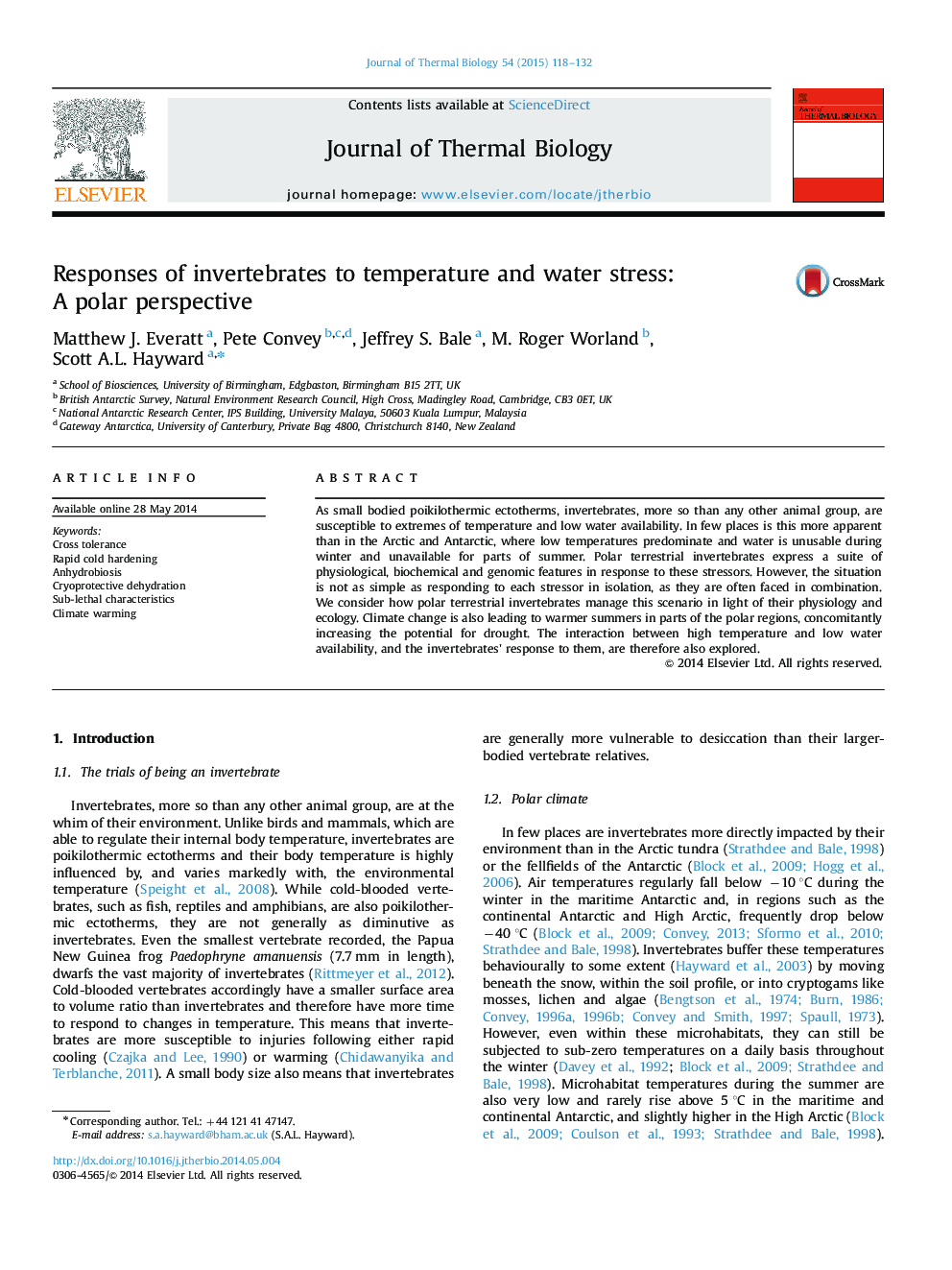| کد مقاله | کد نشریه | سال انتشار | مقاله انگلیسی | نسخه تمام متن |
|---|---|---|---|---|
| 2842712 | 1571092 | 2015 | 15 صفحه PDF | دانلود رایگان |
• Invertebrates are vulnerable to extremes of temperature and low water availability.
• They express a suite of features in response to each stressor individually.
• However, stresses usually occur simultaneously in nature.
• Cross-tolerance is observed between temperature and water stress.
• This is discussed in light of climate warming and the invertebrates׳ ecology.
As small bodied poikilothermic ectotherms, invertebrates, more so than any other animal group, are susceptible to extremes of temperature and low water availability. In few places is this more apparent than in the Arctic and Antarctic, where low temperatures predominate and water is unusable during winter and unavailable for parts of summer. Polar terrestrial invertebrates express a suite of physiological, biochemical and genomic features in response to these stressors. However, the situation is not as simple as responding to each stressor in isolation, as they are often faced in combination. We consider how polar terrestrial invertebrates manage this scenario in light of their physiology and ecology. Climate change is also leading to warmer summers in parts of the polar regions, concomitantly increasing the potential for drought. The interaction between high temperature and low water availability, and the invertebrates׳ response to them, are therefore also explored.
Journal: Journal of Thermal Biology - Volume 54, December 2015, Pages 118–132
